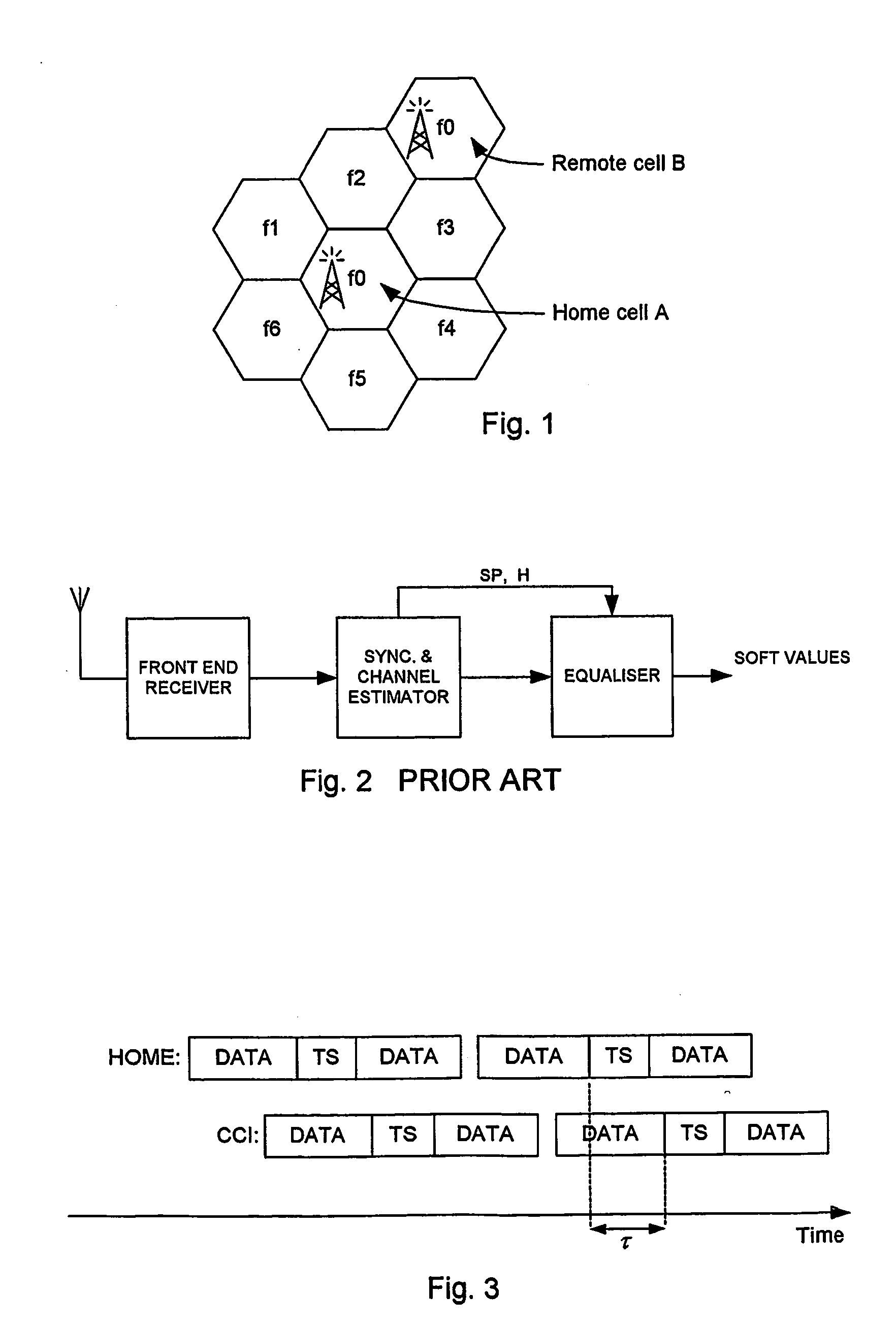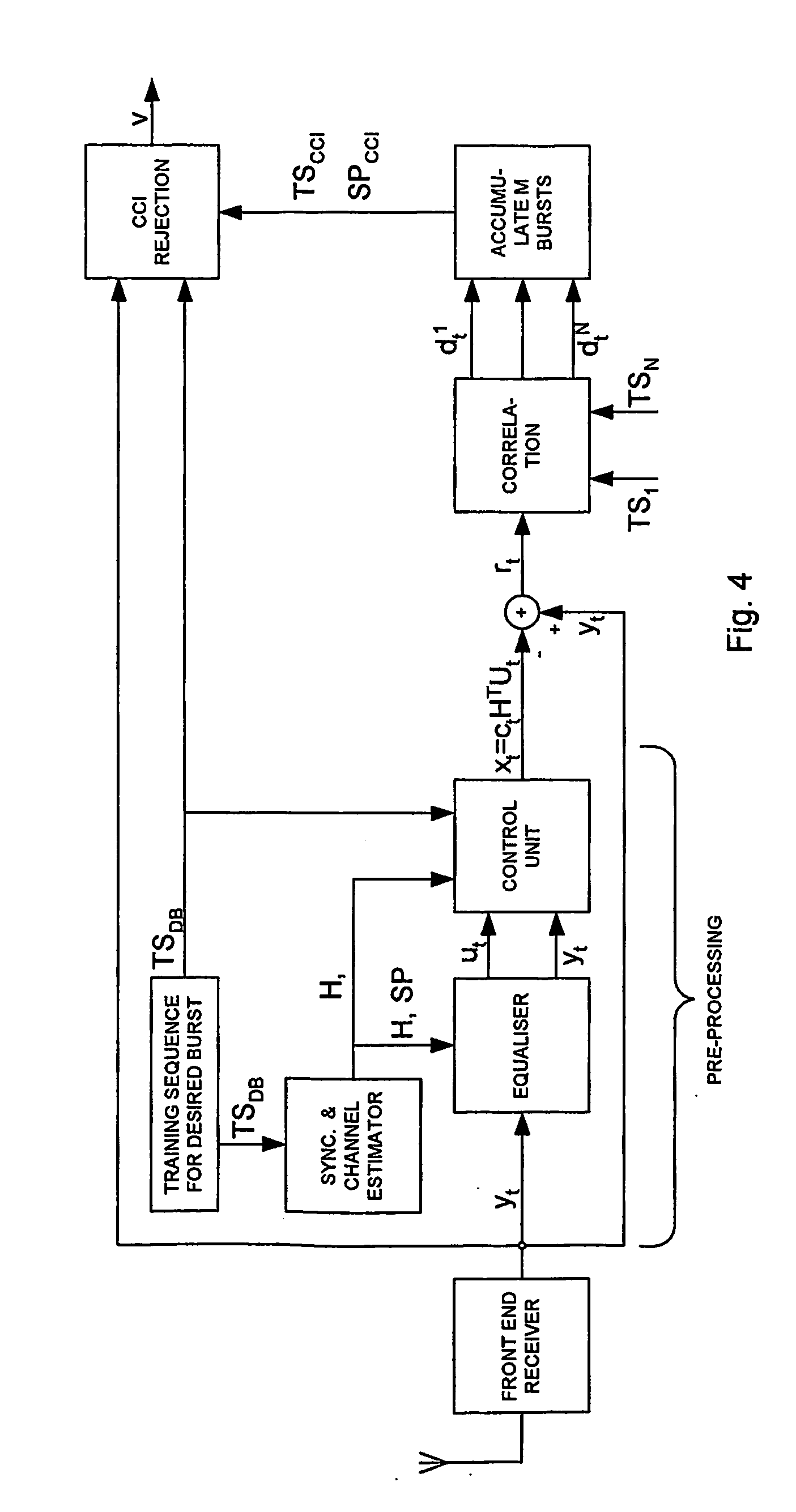Co-channel interference detector for cellular communications systems
a technology of co-channel interference and detector, applied in the field of co, can solve the problem of much faster convergence of the algorithm used for detecting co-channel interference, and achieve the effect of fast convergence of the algorithm
- Summary
- Abstract
- Description
- Claims
- Application Information
AI Technical Summary
Benefits of technology
Problems solved by technology
Method used
Image
Examples
Embodiment Construction
[0023]FIG. 1 shows a home cell A in which the home base station uses the frequency f0. A number of neighbouring cells (in this case six are shown) cover the geographical area around the home cell A, and the base stations in neighbouring cells use different frequencies f1 to f6, all of which in particular are also different from the frequency f0 used in the home cell A Further away from the home cell A and beyond the surrounding neighbouring cells is a remote cell B in which the remote base station uses the same frequency f0 as is used in the home cell A. This is called frequency reuse. The remote base station in the remote cell B may thus cause co-channel interference to mobile stations in the home cell A
[0024]FIG. 3 shows a received desired signal from the home base station and a received interfering signal CCI from a remote base station. Each signal consists of a series of bursts, where each burst contains two data sequences with a training sequence TS between the two data sequen...
PUM
 Login to View More
Login to View More Abstract
Description
Claims
Application Information
 Login to View More
Login to View More - R&D
- Intellectual Property
- Life Sciences
- Materials
- Tech Scout
- Unparalleled Data Quality
- Higher Quality Content
- 60% Fewer Hallucinations
Browse by: Latest US Patents, China's latest patents, Technical Efficacy Thesaurus, Application Domain, Technology Topic, Popular Technical Reports.
© 2025 PatSnap. All rights reserved.Legal|Privacy policy|Modern Slavery Act Transparency Statement|Sitemap|About US| Contact US: help@patsnap.com



